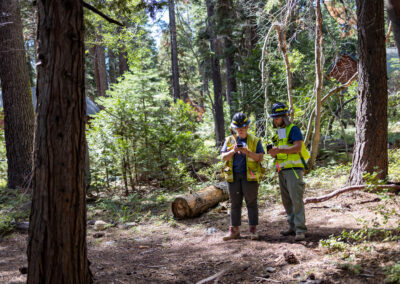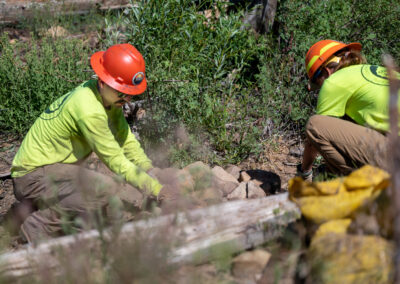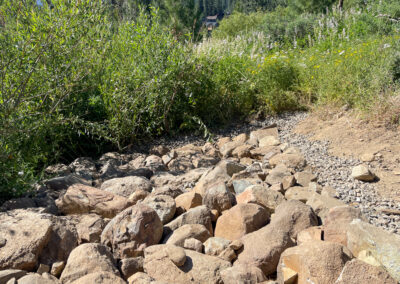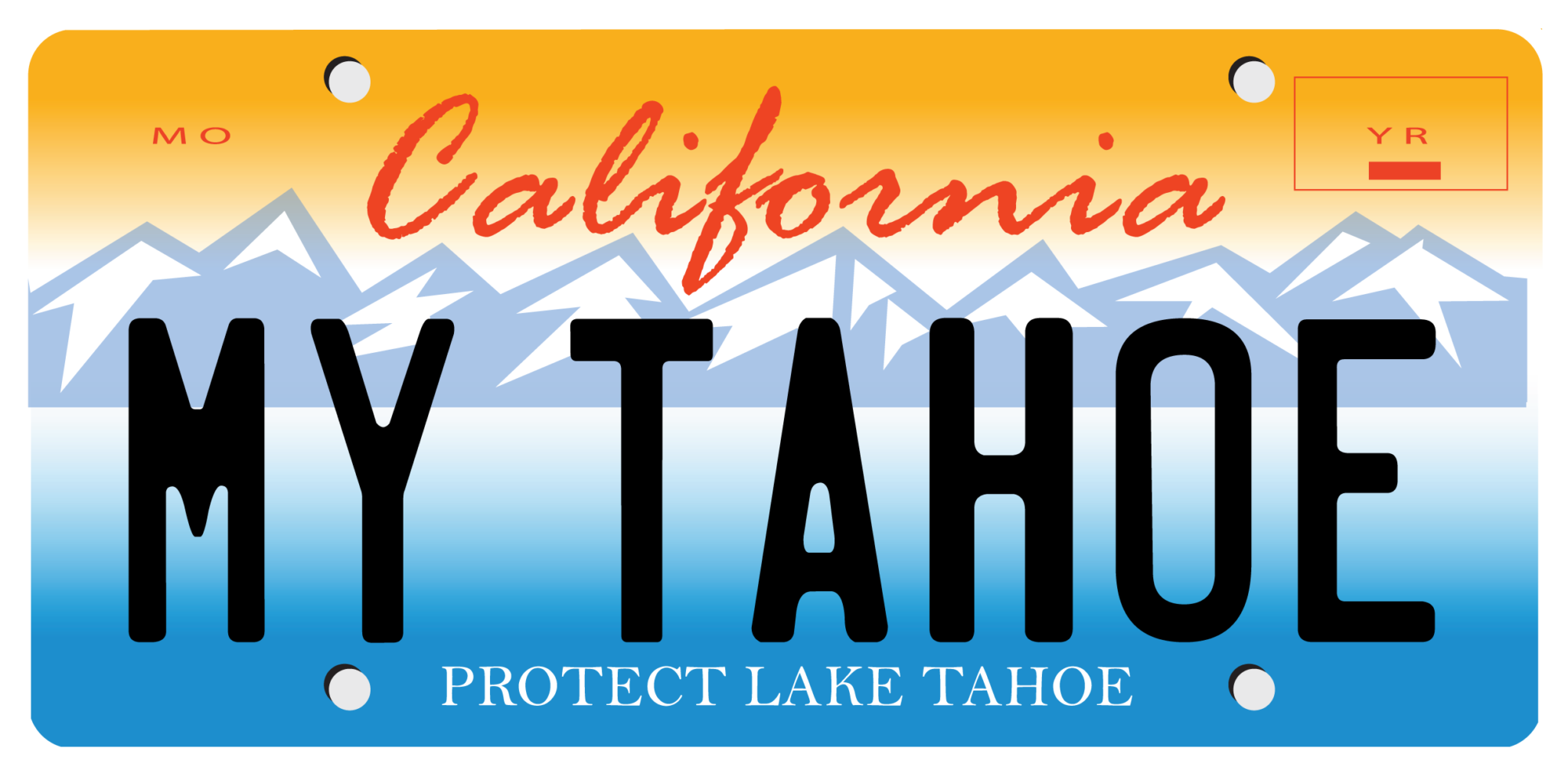
July 2022 Conservancy Newsletter
As we near the middle of summer, Conservancy field operations are in full swing. Multiple restoration projects are underway, along with efforts to improve forest resilience and reduce wildfire risk. Plus, the news is out: Jason Vasques will soon take on the role of the Conservancy Executive Director.
-California Tahoe Conservancy

Jason Vasques to Lead as Conservancy’s New Executive Director
The California Tahoe Conservancy’s Board has appointed Jason Vasques as the Conservancy’s new executive director.
“The Board is thrilled to have Jason lead the Conservancy,” said Conservancy Board Chair and El Dorado County Supervisor Sue Novasel. “His deep knowledge of the agency and its work, along with his science and management experience, made him an exceptional candidate. We are all excited about the Conservancy’s future under his guidance.”
Vasques assumes his new role on August 8. Read more.
Upper Truckee Marsh Restoration Nears Completion
The third and final year of construction is underway for the Upper Truckee Marsh Restoration Project. Much of the Conservancy’s work addresses harm from 20th-century development at the Marsh, one of the largest remaining wetlands in the Sierra Nevada. Work this summer includes final planting of wetland plants before removing a soil berm that separates 12 acres of newly created wetlands from the Upper Truckee River. This will allow river water to flood the new wetland area. The Conservancy will also complete a new, accessible-to-all trail to Lake Tahoe. Project benefits include improved wildlife habitat, enhanced resilience to extreme weather, and pollution filtering of water entering Lake Tahoe. Learn more.


Reducing Wildfire Risk on Conservancy Lands
Community Forestry, Part 1 – Crews at Work in Tahoma
Our seasonal forestry crew, a partnership with Tahoe Resource Conservation District (Tahoe RCD), helps maintain forest health on Conservancy lands. Tahoe forests are fire-dependent ecosystems. In the absence of fire, forests can become overly dense. Crowded forests are less resilient to insects, disease, and drought, and pose a greater wildfire risk to the community. Here, the crew is taking down hazard trees that could threaten neighbors on one of the Conservancy’s thousands of small, neighborhood lots. Crew members buck the logs and stack the cut wood along the street for community members to collect as free fuelwood for next winter (free permit required). They chip branches and small-diameter trees for mulch for use on Conservancy restoration projects.

Preparing Conservancy Lands for Future Fuels Reduction
Community Forestry, Part 2
Within the nearly 4,700 Conservancy-owned parcels are approximately 5,500 acres of forested land. Most of these properties are small neighborhood lots. Our Community Forestry Program improves forest health and reduces risk from wildfire on these Conservancy lands. Before the Conservancy can thin our forested lots, we identify the boundaries for each project. This season, we have been working our way north through our west shore lots in Placer County. Here, staff flags project boundary lines near Tahoma to prepare for future work to improve forest resilience and reduce wildfire risk.

Land Management Crew Repairs Conservancy Land Affected by Caldor Firefighting
This summer, the Conservancy’s Land Management Crew has been repairing Conservancy lots damaged as a side effect of efforts to fight the 2021 Caldor Fire.
As the Caldor Fire advanced towards Tahoe, fire protection agencies bulldozed trees and brush along miles of “contingency lines” around neighborhoods. By removing flammable fuels, these lines would have helped firefighters protect homes if the fire had reached the neighborhoods. Luckily, the fire was stopped and no homes were lost in Tahoe. Fire agencies repaired contingency lines after the fire, and the Conservancy took further repair steps last fall, but some Conservancy lots remained at risk of erosion because of lost vegetation and disturbed soils.
This month, the Land Management Crew, also a partnership with Tahoe RCD, returned to a Conservancy property above Mule Deer Circle in El Dorado County. Crew members used natural materials to repair a bulldozed drainage. They placed rocks and logs in the drainage to slow water flows, and fortified the trail with rock to secure it against floods. These steps will distribute flows and keep sediment onsite instead of washing out into creeks downhill. The Conservancy will continue to adaptively manage this 31-acre property and other Caldor-affected lands for years to come. This management is not only good for the property’s hillside habitat – it also protects water quality that drains to Lake Tahoe.
How Demolishing a Building Can Help Lake Tahoe
As part of its Tahoe Livable Communities program, the Conservancy acquires aging developments on environmentally sensitive lands. By removing the development, restoring the land, and putting the development rights to better use, we can help protect Lake Tahoe’s water quality and support efforts to make Tahoe town centers more walkable and bikeable.

July Fourth Weekend Recreation on Conservancy Lands
July Fourth was a relatively low key event at the Conservancy’s lakefront properties, thanks to the work of Tahoe RCD crews and the Conservancy’s Land Management team. Independence Day celebrations typically draw some of the biggest crowds of the year to Lake Tahoe’s shores. Tens of thousands of visitors and residents line up each year to watch fireworks and enjoy an evening at the beach. Conservancy crews and staff spent July Third and Fourth stationed at Conservancy beaches and lakefront properties. Crew members coordinated with the public as they approached the shoreline, passed out trash bags, and kept up communication all evening long. The result was minimal garbage and no major conflicts despite a solid turnout on mild summer nights.
Conservancy Staff Updates
New Employees

Maritza Lopez
Accounting Assistant
Maritza Lopez joined the Conservancy in June as an Accounting Assistant. As the newest member of the Conservancy’s fiscal team, she will mainly focus on accounts payable but is happy to help wherever needed. Maritza earned her bachelor’s degree in Global Business Management from Sierra Nevada University. She previously worked as an office manager for a South Lake Tahoe-based business, where she developed her interest in accounting.

Paris Wagner
Legal Intern
Paris Wagner joined the Conservancy in May as a Legal Intern. She assists the legal team with researching and drafting memoranda on land use, California Environmental Quality Act matters, and general environmental issues. Paris studies law at the University of Utah in Salt Lake City. Before joining the Conservancy, she helped write policy for the Utah System of Higher Education, served as a research assistant for the University of Utah’s Wallace Stegner Center for Land and the Environment, and most recently served as an extern with the Earth Law Center, where she researched Rights of Nature issues and helped draft comment letters, primers, and amicus briefs. In August, Paris will return to Utah complete her final year of law school. Prior to law school, she worked as a park ranger in Sequoia National Park.
Upcoming California Tahoe Conservancy Board Meetings
The California Tahoe Conservancy Board will meet on September 15, 2022. An agenda will be available on the Conservancy website ten days prior to the meeting.
Lake Tahoe in the News
California Forestry Tour Highlights Lake Tahoe Fire Reduction Projects, Fox 40-Sacramento, June 27, 2022
Tahoe Conservancy Gaining Ground on Marsh Restoration Project, Tahoe Daily Tribune, June 30, 2022
Volunteers and organizations tackle pollution on land and water for annual July 5th Cleanup, League to Save Lake Tahoe, July 5, 2022
Lake Tahoe Clarity Report for 2021, UC Davis, July 6, 2022
Clearing for Good – The Why and What of Ongoing Forested Treatment Efforts near Tahoe City, Moonshine Ink, July 8, 2022
A Helpful, Practical Guide to Our 12 Favorite Public Beaches in Lake Tahoe, SFGate, July 9, 2022
Restoring Lake Tahoe’s Natural Filter, Tahoe Quarterly, Summer 2022
Show Your Love for Tahoe While Protecting It
When you order a California Lake Tahoe license plate, you help build biking and hiking trails, restore fish and wildlife habitat, and protect Lake Tahoe’s famous beaches and blue waters. 96 percent of all funds from Tahoe plate sales come back to Lake Tahoe.
Show Your Love for Tahoe While Protecting It
When you order a California Lake Tahoe license plate, you help build biking and hiking trails, restore fish and wildlife habitat, and protect Lake Tahoe’s famous beaches and blue waters. 96 percent of all funds from Tahoe plate sales come back to Lake Tahoe.

























